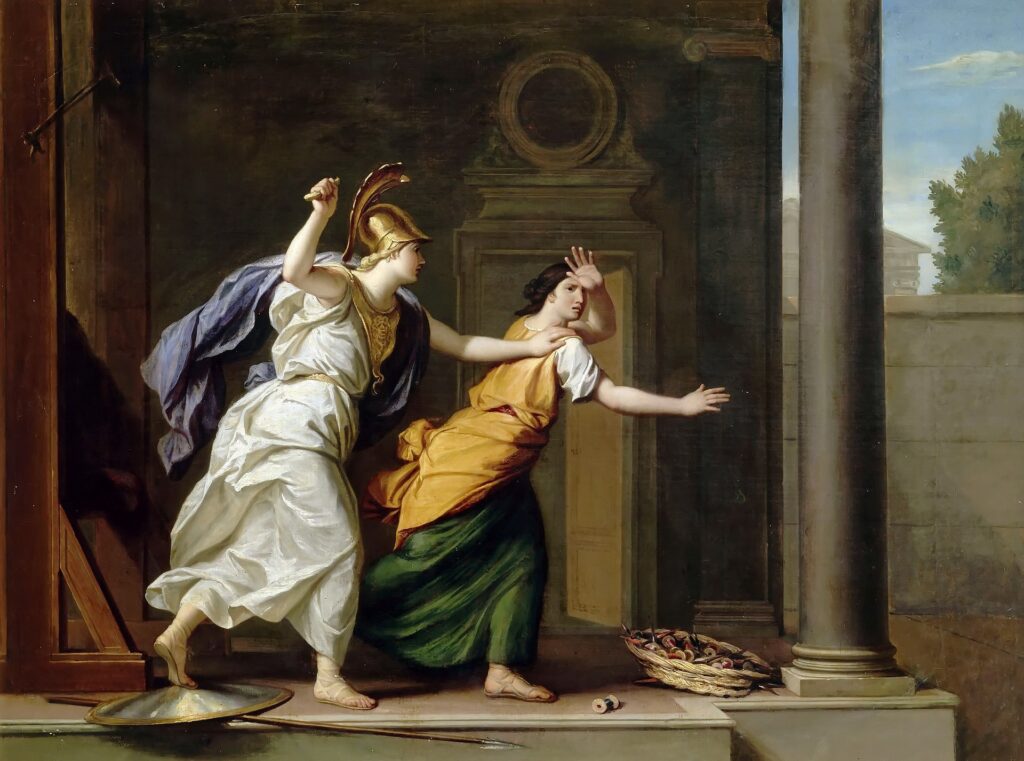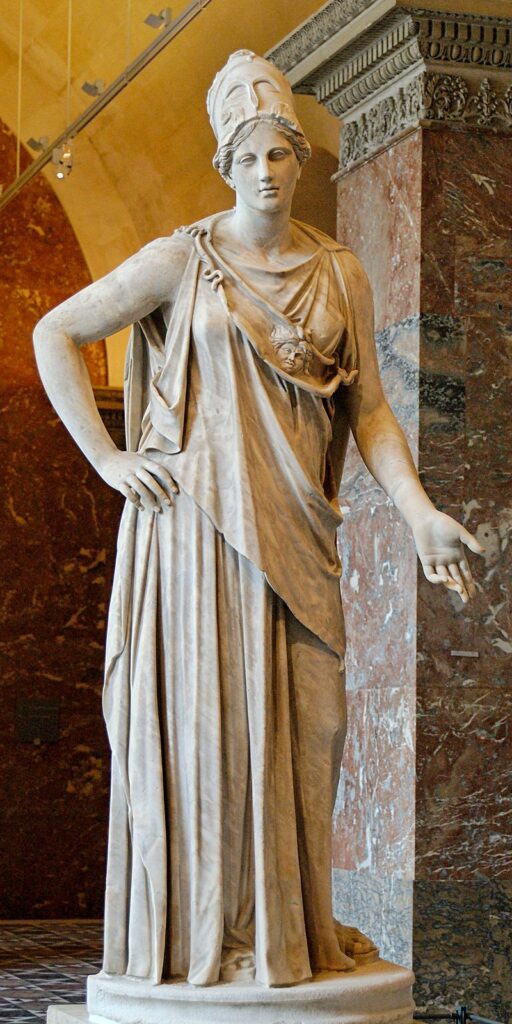Arachnida and Elaeagnus, scientific names with etymologies that date to times long ago. In this late winter episode of People and Plants we’ll take a look at how they can be traced back to the Greek goddess Athena.
So who was Athena? She was the patron goddess of Athens (and other cities) and was the favorite daughter of Zeus. She was considered influential in many things including wisdom, skillful warfare and household crafts. She was the patron of craftsmen-especially spinners and weavers, artisans, metalworkers and armorers which is why Athena is frequently depicted wearing various bits and pieces of armor. She’s also been given the additional name of “Hippia” (of the horses) and is credited with inventing the bit, bridle, chariot and wagon.
She associated with strategy and military cunning and was believed to lead soldiers into battle, favoring those who used their intelligence over brute strength. It was also thought she favored those who were fighting for a just cause and was also the patron of heroes.
From very early on Athena was associated with birds especially the owl. She’s frequently depicted with an owl perched on her hand or shoulder, or flying near her. Through this association with Athena, the owl eventually became a symbol of wisdom.

Wikimedia Commons
As you can tell she was a very busy…anthropomorphic personification.
So what does she have to do with Arachnida and Elaeagnus?
It’s Story Time!
The Story of Arachne

Minerva (Roman) =Athena (Greek)
According to Publius Ovidius Naso, known in English as Ovid, Arachne was a skilled weaver and a devoted student of Athena. Over time she became so convinced of her weaving skills that she began claiming that her abilities were greater than those of Athena herself. Eventually Athena heard about this and decided to give Arachne a chance to redeem herself. She assumed the form of an old woman and warned the young upstart to not think too highly of herself or offend the deities. Arachne, with the typical humility of youth, scoffed at the old woman’s advice and even wished for a weaving contest, so she could prove her skill. The old woman instantly vanished and in her place stood, you guessed it, Athena. She accepted the challenge and the two started weaving their respective tapestries.
Athena wove the scene of her victory for the patronage of Athens. Her tapestry also depicted the 12 Olympian gods and their victory over the mythological figures who had challenged their authority.Arachne’s tapestry featured twenty-one episodes of the deities’ infidelity including many of Zeus’ dalliances. Its theme was the unjust and discrediting behavior of the gods towards mortals. Athena admitted that Arachne’s work was perfect but was deeply offended at the subject. In a fit of pique Athena destroyed Arachne’s tapestry and loom and then smacked Arachne across the face with her staff. Arachne, realizing her mistake, hanged herself in despair. Athena, feeling remorseful, brought her back from the dead in the form of a spider.
To bring this sad tale up to the present, the class Arachnida is named after Arachne. Why?
Arachne means “spider” in ancient Greek.
So now you know.

On to our next story.
The Legend of Elaea
Elaea was an extremely talented girl from Attica who beat all her opponents in both the athletic arenas and beauty contests. She was so outstanding in all she did and was that she soon won the attention and favor of Athena who happened to be the patron-goddess of Attica.
Unfortunately Elaea had developed the bad habit of gloating about her victories. Needless to say she wasn’t popular with her peer group and eventually they grew to resent her. Many of her fellow athletes and beauty contestants whom she had defeated decided to murder her out of envy, which they soon accomplished.
Athena felt very sad over this. And so Athena would no longer feel this way, Gaia, the goddess of the earth, changed the dead girl into an olive tree. The olive is now the most sacred tree and is associated with Athena and Athens.
FWIW- the genus Elaeagnus is named after Elaea. It’s considered an ornamental although the small fruits are edible. Examples are silverberry and Russian olive, which have become invasive in many regions.
The genus Olea is the more familiar grocery store/pizza topping olive.

Wikipedia Commons
So what lessons can we draw from these fables?
Stay humble and don’t anger the gods.
They’re really poor losers.


Great post!!!
Glad you enjoyed it and thanks for the kind comment.